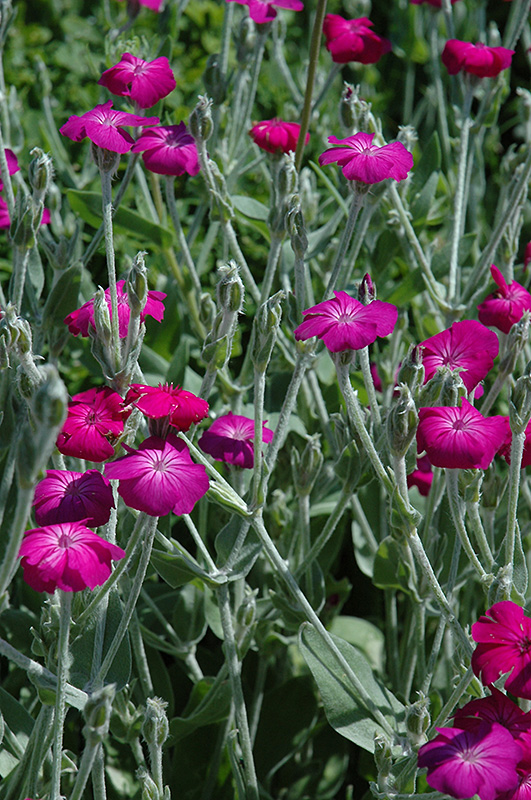|
|
|
| home | about us | loyalty program | products | directions | warranty | garden splendor ® | plant collector | landscaping | |
| Plant Finder | |
|
Plant Height: 24 inches Flower Height: 3 feet Spacing: 18 inches
Sunlight:
Hardiness Zone: 2b Ornamental Features Rose Campion has masses of beautiful fuchsia flowers with white eyes at the ends of the stems from early to mid summer, which are most effective when planted in groupings. The flowers are excellent for cutting. Its attractive tomentose pointy leaves remain gray in color throughout the season. The silver stems can be quite attractive. Landscape Attributes Rose Campion is an open herbaceous perennial with an upright spreading habit of growth. Its relatively fine texture sets it apart from other garden plants with less refined foliage. This plant will require occasional maintenance and upkeep, and should be cut back in late fall in preparation for winter. It is a good choice for attracting butterflies to your yard, but is not particularly attractive to deer who tend to leave it alone in favor of tastier treats. Gardeners should be aware of the following characteristic(s) that may warrant special consideration;
Rose Campion is recommended for the following landscape applications;
Planting & Growing Rose Campion will grow to be about 24 inches tall at maturity extending to 3 feet tall with the flowers, with a spread of 24 inches. When grown in masses or used as a bedding plant, individual plants should be spaced approximately 18 inches apart. It grows at a fast rate, and under ideal conditions can be expected to live for approximately 3 years. As an herbaceous perennial, this plant will usually die back to the crown each winter, and will regrow from the base each spring. Be careful not to disturb the crown in late winter when it may not be readily seen! This plant should only be grown in full sunlight. It prefers to grow in average to moist conditions, and shouldn't be allowed to dry out. It is not particular as to soil type or pH. It is somewhat tolerant of urban pollution. This species is not originally from North America. Characteristics
Applications
Features & Attributes
|
|
